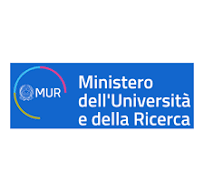- Ricerche e Progetti
- Biblioteca della Libertà
- Pubblicazioni e Working Paper
- Articoli e media
- Eventi e notizie

Tesi / Le contraddizioni della modernità e del moderno: il caso americano
Resolving the Contradictions of Modernity and Modernism: The Case of America
- Categoria/Category
- Anno XXIII, n. 103, ottobre-dicembre 1988
- Autore/Author
- Daniel Bell
- Editore/Publisher
- Centro Einaudi
Abstract
Abstract disponibile solo in lingua inglese
The subject of this paper is the transition to modernity and from this to post-modernism, considered from the point of view of politics, way of life and cultural aspects. Research is conducted by analysing an "exemplary" case—that of the United States—in which the author identifies the "new nation" par excellence.
The author identifies five fundamental dimensions of modernity: a) society seen not as a natural order defined by a telos, but as a social contract; b) the interpretation of social life as a movement from nature to culture; c) a critique of religion in as much as it is a shield to Man's self-comprehension; d) the autonomy of the various realms of human activity; e) the idea of the variability of human nature. These dimensions are thus at the root of modern art, as they consolidated in the impulse to re-build and re-design both Man and his world.
The United States, as the only civilized society which has reached maturity, can be considered as the incarnation of modernity. While economic and political modernism formed the basis of American life, modernism in art and in the way of life was to appear later and also a consequence of the heavy emigration of European intellectuals to the United States in those years. A reconstruction of the cultural history of the United States also shows however how modern culture has been transformed into pure fashion, while post-modernism asserted the freedom of the body and no longer of the imagination only. In its turn, political liberalism—while rejecting the stronger economic theories in the post-war period and therefore calling increasingly on state intervention in economic affairs—has instead paradoxically defended to extreme limits the right of individuals to self-fulfilment and experimental life-styles, showing itself to be incapable of drawing any boundary lines in this area. The result is, on the one hand, the dissolution of art which has been reduced to a purely narcissistic or intellectualist exercise and, on the other hand, the revolt against modernity, including political modernity, the signs of which can be recognized today throughout the West.
This revolt is regressive in the extreme and, potentially, very dangerous, However, in order to reply to the request for the significance and meaning that this in some way expresses, it is necessary to re-discover and re-define the actual roots of liberalism according to the best they have to offer: individuals, freedom and the sanctity of life. Here the author proposes a liberalism understood in the Kantian sense not as a utilitarian concept of individual hedonism, but as the distinction between the public and the private where the autonomy of the individual is defended as much as on the contractual plane as on an ethical plane. Such liberalism recognizes obligations on account of the claiming of rights: in the first place Man's obligation, in addition to delineating the future, to re-possess—in the Goethian sense—his past, his received heritage. In a society that rejects traditional mechanisms of ascription, that wishes individuals to be free, equal and endowed with inalienable rights, freely accepted re-possession unites that which is the individual's and that which is held in common and, since it is perpetuated and renewed in time, it is the basis for a moral duty that overcomes the self.






